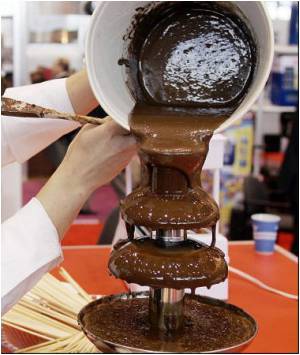Researchers are seeking new ways to improve chocolate and enhance the world's pleasure.

Corresponding author Christoph Wittmann of Saarland University, Saarbruecken, Germany, said their studies have unraveled the metabolism of the rather unexplored acetic acid bacteria in the complex fermentation environment.
In the study, Wittmann and his collaborators from the Nestle Research Centre, Lausanne, Switzerland, simulated cocoa pulp fermentation in the laboratory. They mapped metabolic pathway fluxes of the acetic acid bacteria, feeding them specific isotopes that could easily be tracked.
Wittmann compares the process to viewing the flows of city traffic from the sky. "We could see what they eat and how they use the nutrients to fuel the different parts of their metabolism in order to grow and produce extracellular products," he says.
The key molecule to initiate flavor development is acetate, says Wittmann, noting that "The intensity of the aroma from a fermented bean is amazing."
Production of acetate requires two major nutrients: lactate and ethanol. These are produced by lactic acid bacteria, and yeast, respectively, during the initial fermentation of cocoa pulp sugars, says Wittmann.
Source-ANI
 MEDINDIA
MEDINDIA




 Email
Email









